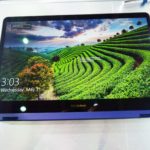
Without as much fanfare as 3G or even 4G, the next big mobile evolution is close with the arrival of 5G services expected in the next three years.
They promise much faster speeds on the go for users who cannot get on the Net fast enough today. Plus, the low latency could enable real-time remote control of machines, including autonomous vehicles.
Ericsson, which makes the networks that connects users with the new technology, believes 5G is a game changer. Its head of network products in Southeast Asia, Linda Lindberg, says the demos so far already offer a glimpse of what it brings, in this month’s Q&A.
NOTE: The responses have been edited for brevity and house style.
Q: It has taken years for 5G standards to be confirmed. When can we see the first commercial deployments?
A: 5G is anticipated to be rolled out by 2020 to provide users – anyone or anything – access to massive amounts of information and the ability to share data anywhere, anytime. Ericsson predicts there will be half a billion 5G subscriptions by 2022. You could say it’s the enabler of the “networked society”.
In Asia, deployments will start first in South Korea (in time for the Winter Olympics in 2018), Japan (2020) and then China. All three of these countries will host the Olympic Games in the coming years, and have stated intentions to launch 5G services in conjunction with the games.
As 5G includes so much more than radio, the transition to 5G will be bigger and more complex than any previous generation network. At Ericsson, we are building 5G as an evolution of our 4G LTE technology, and as a result, we expect many components to be launched before 2020. We believe most customers will implement a carefully planned step-by-step transition to 5G, with field trials and commercial deployment in the next few years.
Q: What is the biggest change that 5G will bring to the table?
A: 5G is expected to address the needs of both consumers and industries. 4G networks are built for mobile broadband traffic and becoming increasingly congested with the tremendous data growth, especially with video driving consumer mobile data usage.
Bandwidth-hungry consumer applications such as Augmented Reality, 4K TV will be addressed by the speed increase that 5G offers. Consumers are increasingly choosing to use automated, connected applications, which is driving IoT adoption. One example is the connected pet solution that we see becoming popular these days, where dogs’ collars are coming with GPS and mobile connectivity to enable tracking of lost pets.
Another scenario is where insurance companies leverage IoT (Internet of Things) and connected sensors in cars, to monitor the users’ driving styles and habits, and then apply insurance policies based on those data.
As consumers increasingly rely on IoT devices, and begin moving within augmented and virtual reality environments, the demand for battery-friendly, high-speed to gigabit/s, near-zero latency connectivity is expected to grow rapidly. These technologies must be truly mobile to become popular, which makes the need for reliable 5G networks even more evident.
In addition, the new capabilities will enable operators to support new use cases for industries including IoT applications, such as remote operation of machinery or cloud robotics in manufacturing and healthcare, smart connected transport system.
Some European countries are looking at burying IoT sensors into the road, which will last for 10 years, to count cars and congestion on roads, to enable feedback to city planners and local governments to plan and organise cities in a better fashion.
Q: We’ve learnt from the 3G and 4G experience that controlled trials cannot be trusted in terms of revealing real-world performance. How much of a hit are we going to expect in terms of latency or downlink speeds in actual deployments?
A: When 4G was first trialed, similarly like 5G is today, we achieved around 150Mbps downlink speeds. Now commercially in Australia, for example, there is commercial 4G live service on our 4G networks with 1 Gbps peak speeds and a good portion of the users experience several hundred megabits per second in real use. Singtel also launched nationwide 450 Mbps mobile data speeds on their network.
In a real-life scenario, the real performance of the network speed will depend on adoption speed and adaptability of the new devices. For example, when we demonstrated the 5G connected car at Mobile World Congress in Barcelona that was remotely driven over a real 5G network.
The driver was sitting comfortably in the haptic feedback chair at the conference with three 4K displays projecting the view from the cameras on the car that was 50km away, the end-to-end latency from the car to the driver in the chair was around 50 ms in that setup.
It was short enough for a real-life driving experience. However, out of those 50ms, the 5G radio network component in that setup had latency of only 3ms. The rest was the cameras, video encoding, the IP network over the 50km distance, and the 4K monitor rendering. Therefore, the real-life experience I think will depend more on the application. I don’t think the 5G network will be limiting at all.
Q: When they were launched, both 3G nor 4G did not deliver the promise of a global cellphone standard. Is 5G going to suffer from the same frequency fragmentation and incompatible technologies?
A: In reality, we now see majority of users across the globe being connected to 3G or 4G mobile networks, to access the Internet. Our view is that Internet adoption has been accelerated by 3G and 4G.
Despite different countries having different frequency allocations, via the 3GPP standardisation, the industry has incorporated all these different frequencies into the standard, which then enables handset manufacturers and network vendors to build multi-regional, multi-frequency capable 3G and 4G devices and networks.
Without this standardisation to enable multiple frequencies, we won’t get global scale, which then drives down the cost of devices, avoids technology fragmentation, and enables mass adoption.
We see 5G taking a similar approach, through standardisation. This will enable devices manufacturers and network equipment vendors to build networks and make devices to match all the different frequency allocations that each country or region will permit.






